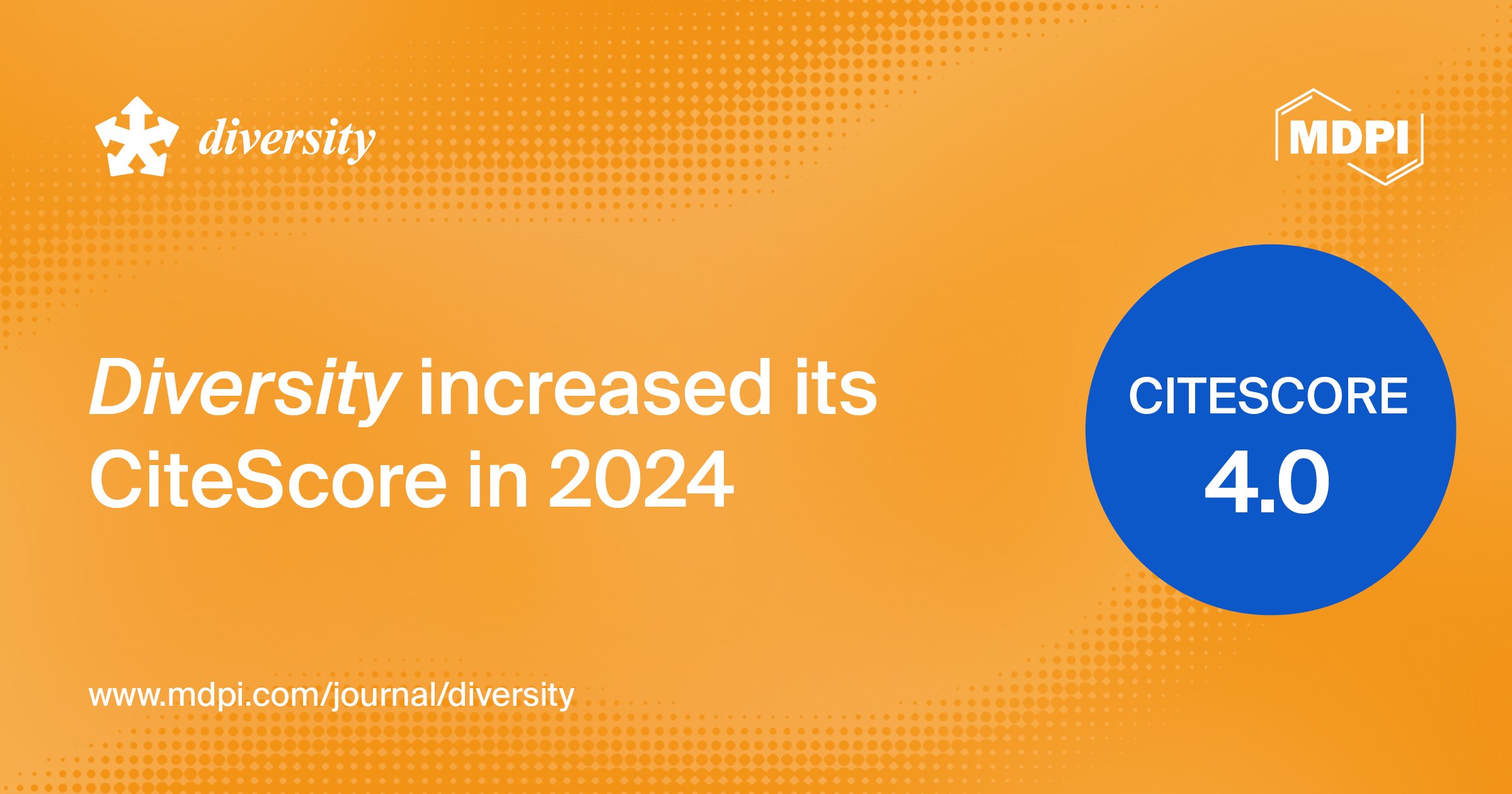-
 The West Atlantic Hoary Rubble Crab, Banareia palmeri, Behaves Like a Corallivore
The West Atlantic Hoary Rubble Crab, Banareia palmeri, Behaves Like a Corallivore -
 First Report of Three Ampharetinae Malmgren, 1866 Species from Korean Subtidal Waters, Including Genetic Features of Histone H3 and Descriptions of Two New Species
First Report of Three Ampharetinae Malmgren, 1866 Species from Korean Subtidal Waters, Including Genetic Features of Histone H3 and Descriptions of Two New Species -
 Diversity, Ecology, and Distribution of Opuntioideae (Prickly Pears and Chollas) Neophytes in Southern Switzerland
Diversity, Ecology, and Distribution of Opuntioideae (Prickly Pears and Chollas) Neophytes in Southern Switzerland
Journal Description
Diversity
Diversity
is a peer-reviewed, open access journal on the science of biodiversity from molecules, genes, populations, and species, to ecosystems and is published monthly online by MDPI.
- Open Access— free for readers, with article processing charges (APC) paid by authors or their institutions.
- High Visibility: indexed within Scopus, SCIE (Web of Science), PubAg, GEOBASE, CAPlus / SciFinder, and other databases.
- Journal Rank: JCR - Q2 (Biodiversity Conservation) / CiteScore - Q1 (Agricultural and Biological Sciences (miscellaneous))
- Rapid Publication: manuscripts are peer-reviewed and a first decision is provided to authors approximately 18.3 days after submission; acceptance to publication is undertaken in 4.4 days (median values for papers published in this journal in the second half of 2024).
- Recognition of Reviewers: reviewers who provide timely, thorough peer-review reports receive vouchers entitling them to a discount on the APC of their next publication in any MDPI journal, in appreciation of the work done.
- Diversity is a companion journal of Fossil Studies.
Impact Factor:
2.1 (2024);
5-Year Impact Factor:
2.3 (2024)
Latest Articles
Flowing Round the World: Water Snakes (Natricidae) Show Habitat-Related Adaptive Radiation After Dispersal to the New World
Diversity 2025, 17(7), 449; https://doi.org/10.3390/d17070449 - 24 Jun 2025
Abstract
Adaptive radiations are characterized by increases in rates of lineage and trait evolution, typically due to the opening of new ecological opportunities such as may follow from dispersal to a new region or the evolution of a trait that allows exploitation of new
[...] Read more.
Adaptive radiations are characterized by increases in rates of lineage and trait evolution, typically due to the opening of new ecological opportunities such as may follow from dispersal to a new region or the evolution of a trait that allows exploitation of new niches. This results in clades that have accumulated unusually high biological diversity within a relatively short evolutionary timespan and hence the phenomenon has attracted longstanding interest amongst evolutionary biologists. Natricidae is a family of snakes with a primarily Old World distribution but which have colonized the New World on a single occasion. This dispersal event coincides with an increased speciation rate that has led to a species-rich New World clade. Herein, we take a phylogenetic comparative approach to investigate a likely adaptive radiation of New World natricids. We first confirmed previously reported findings of a single origin (providing new ecological opportunity) coinciding with a burst of lineage diversification. We then estimate the rates of evolution for three ecologically important traits (body size and broad categories of diet and habitat) separately for New World and Old World natricids. Of these three traits, our results provide evidence that only transition rates between terrestrial and (semi-)aquatic habitats are higher in the New World clade. Taken together, this supports a scenario of an adaptive radiation in natricids primarily associated with differentiation by habitat as the clade spread across the New World following its arrival there. Considering other adaptive radiations alongside our evidence for Natricidae, we propose the hypothesis that there is a common distinction between spatially constrained ‘island’ adaptive radiations (which often diverge along trophic axes) and continental adaptive radiations, which diverge as the clade spreads across a larger spatial scale and adapts to different habitats.
Full article
(This article belongs to the Special Issue Biogeography, Ecology and Conservation of Reptiles)
Open AccessArticle
Hyalosira (Diatomeae: Grammatophoraceae) from Florida Keys, U.S.A., Including Two New Species with Consistent Ornamentation
by
Christopher S. Lobban
Diversity 2025, 17(7), 448; https://doi.org/10.3390/d17070448 - 24 Jun 2025
Abstract
►▼
Show Figures
Diatoms are the most numerous of algae and scanning electron microscopy continues to reveal ever-increasing diversity. Two new species of Hyalosira from Florida add new characters distinguishing species in this recently redefined genus: H. ornata sp. nov. from Florida Bay has consistent and
[...] Read more.
Diatoms are the most numerous of algae and scanning electron microscopy continues to reveal ever-increasing diversity. Two new species of Hyalosira from Florida add new characters distinguishing species in this recently redefined genus: H. ornata sp. nov. from Florida Bay has consistent and elaborate ornamentation on both valves and undulate valve margins; H. sertifera sp. nov., from the Atlantic coast of Key Largo, has a thick, consistent, garland-like ring of cristae on only one valve; the former species has deep septa on all copulae except the valvocopula, the latter shallow septa or none on the copulae. Hyalosira hesperia was also found in the Atlantic sample; this is the first record outside the Mediterranean. The number of species known from SEM is now twelve, including four with septa, a diversity potentially useful in exploring outstanding questions of septum function; a key to these species is appended.
Full article
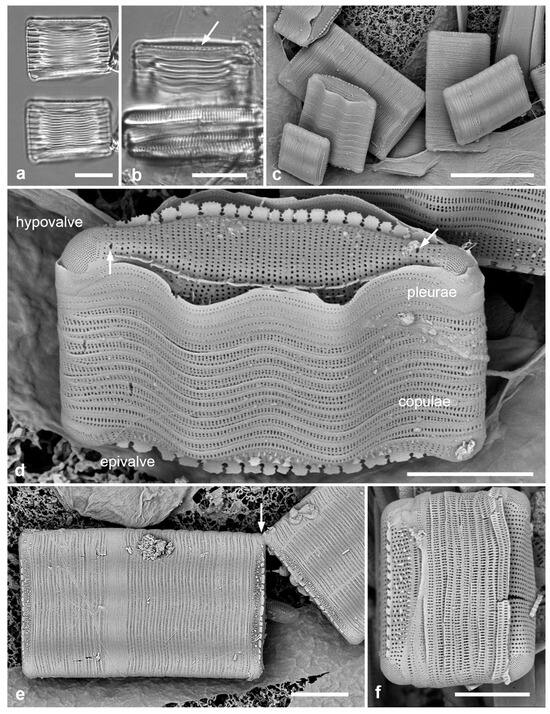
Figure 1

Figure 1
Open AccessInteresting Images
A Rare Benthic Ctenophore, Lyrocteis cf. imperatoris, at Mesophotic Depths off Réunion Island
by
Emilie Boissin, Patrick Plantard, Gilles Siu, Camille Loisil, Nicolas Sparton and Nicole Gravier-Bonnet
Diversity 2025, 17(7), 447; https://doi.org/10.3390/d17070447 - 24 Jun 2025
Abstract
Closed-circuit rebreather diving has opened new opportunities for direct observation of the rich biodiversity of unexplored mesophotic coral ecosystems. We recently encountered four specimens of a rare benthic ctenophore genus, Lyrocteis. The specimens were found on the east coast of Réunion Island
[...] Read more.
Closed-circuit rebreather diving has opened new opportunities for direct observation of the rich biodiversity of unexplored mesophotic coral ecosystems. We recently encountered four specimens of a rare benthic ctenophore genus, Lyrocteis. The specimens were found on the east coast of Réunion Island off the harbor of Sainte Rose at ~95 m. This finding contributes to the limited number of records of the genus in the Indian Ocean. Continued exploration of mesophotic zones remains essential, as each dive has the potential to reveal remarkable and unexpected discoveries.
Full article
(This article belongs to the Section Marine Diversity)
►▼
Show Figures
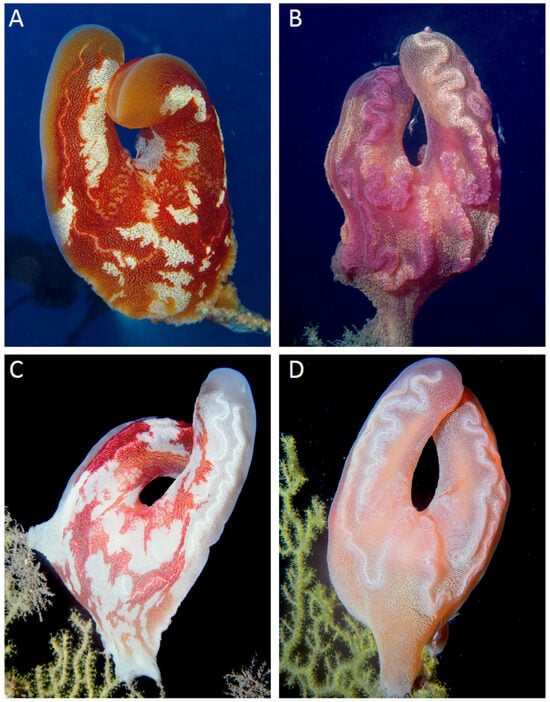
Figure 1

Figure 1
Open AccessReview
An Overview of Post-Fertilization Parental Care in Gobiidae
by
Miguel Trujillo-García, Bertha Patricia Ceballos-Vázquez, Palestina Guevara-Fiore and Hope Klug
Diversity 2025, 17(7), 446; https://doi.org/10.3390/d17070446 - 24 Jun 2025
Abstract
Parental care increases offspring survival but is typically costly to the parent providing it. Understanding diversity in parental care across animals is a timely topic in evolutionary ecology. Fishes are particularly well suited for studies aimed at understanding the diversity of parental care
[...] Read more.
Parental care increases offspring survival but is typically costly to the parent providing it. Understanding diversity in parental care across animals is a timely topic in evolutionary ecology. Fishes are particularly well suited for studies aimed at understanding the diversity of parental care because parental care in fishes is highly variable across species. In most fish species, no care is provided. When parental care is provided, it is often paternal, although biparental and maternal care occur in some fish species as well. Parental care in fishes ranges from simple guarding of eggs in a territory to prolonged care of young after hatching. Within fishes, gobies are thought to exhibit diverse parental care. In the current manuscript, we begin to synthesize our knowledge of patterns of parental care in gobies by providing a review of the parental care strategies that are exhibited by gobiid species. Our review reveals that parental care in gobies most often includes guarding, fanning, and cleaning, although some species engage in other types of care such as larval release, the production of antimicrobial substances, and the construction of post-mating mounds. Care in gobies is most often paternal, but maternal and biparental care have been documented in some species.
Full article
(This article belongs to the Special Issue Evolutionary History of Fishes)
►▼
Show Figures
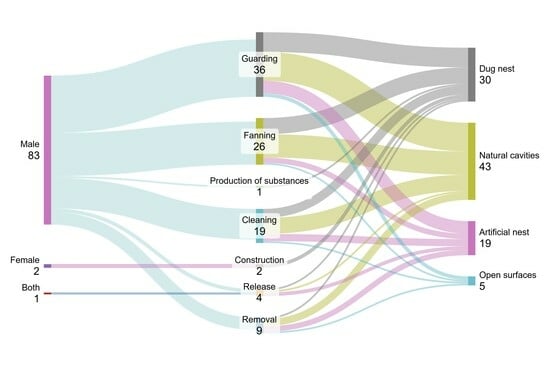
Graphical abstract

Graphical abstract
Open AccessArticle
Integrating 3D-Printed and Natural Staghorn Coral (Acropora cervicornis) Restoration Enhances Fish Assemblages and Their Ecological Functions
by
Edwin A. Hernández-Delgado, Jaime S. Fonseca-Miranda, Alex E. Mercado-Molina and Samuel E. Suleimán-Ramos
Diversity 2025, 17(7), 445; https://doi.org/10.3390/d17070445 - 23 Jun 2025
Abstract
►▼
Show Figures
Coral restoration is essential for recovering depleted populations and reef ecological functions. However, its effect on enhancing fish assemblages remains understudied. This study investigated the integration of 3D-printed and natural Staghorn coral (Acropora cervicornis) out-planting to assess their role in enhancing
[...] Read more.
Coral restoration is essential for recovering depleted populations and reef ecological functions. However, its effect on enhancing fish assemblages remains understudied. This study investigated the integration of 3D-printed and natural Staghorn coral (Acropora cervicornis) out-planting to assess their role in enhancing benthic spatial complexity and attracting fish communities. Conducted between 2021 and 2023 at Culebra Island, Puerto Rico, we employed a before-after-control-impact (BACI) design to test four treatments: natural A. cervicornis, 3D-printed corals, mixed stands of 3D-printed and natural corals, and non-restored controls. Fish assemblages were monitored through stationary counts. Results showed that integrating 3D-printed and natural corals enhanced fish assemblages and their ecological functions. Significant temporal changes in fish community structure and biodiversity metrics were observed, influenced by treatment and location. Herbivore abundance and biomass increased over time, especially in live coral and 3D-printed plots. Reefs with higher rugosity exhibited greater Scarid abundance and biomass post-restoration. Piscivore abundance also rose significantly over time, notably at Tampico site. Fishery-targeted species density and biomass increased, particularly in areas with live and 3D-printed coral out-plants. Fish assemblages became more complex and diverse post-restoration, especially at Tampico, which supported greater habitat complexity. Before restoration, fish assemblages showed a disturbed status, with biomass k-dominance curves above abundance curves. Post-out-planting, this trend reversed. Control sites showed no significant changes. The study demonstrates that restoring fast-growing branching corals, alongside 3D-printed structures, leads to rapid increases in abundance and biomass of key fishery species, suggesting its potential role promoting faster ecosystem recovery and enhanced coral demographic performance.
Full article

Figure 1

Figure 1
Open AccessArticle
Ancient Lineages of the Western and Central Palearctic: Mapping Indicates High Endemism in Mediterranean and Arid Regions
by
Şerban Procheş, Syd Ramdhani and Tamilarasan Kuppusamy
Diversity 2025, 17(7), 444; https://doi.org/10.3390/d17070444 - 23 Jun 2025
Abstract
The Palearctic region is characterised by high endemism in the west and east, and a low endemism centre. The endemic lineages occurring at the two ends are largely distinct, and eastern endemics are typically associated with humid climates and forests, representing the start
[...] Read more.
The Palearctic region is characterised by high endemism in the west and east, and a low endemism centre. The endemic lineages occurring at the two ends are largely distinct, and eastern endemics are typically associated with humid climates and forests, representing the start of a continuum from temperate to tropical forest groups and leading to Indo-Malay endemics. In contrast, western Palearctic endemics are typically associated with arid or seasonally dry (Mediterranean) climates and vegetation. Those lineages occurring in the central Palearctic are typically of western origin. Here, we use phylogenetic age (older than 34 million years (My)) to define a list of tetrapod and vascular plant lineages endemic to the western and central Palearctic, map their distributions at the ecoregion scale, and combine these maps to illustrate and understand lineage richness and endemism patterns. Sixty-three ancient lineages were recovered, approximately half of them reptiles, with several herbaceous and shrubby angiosperms, amphibians, and rodents, and single lineages of woody conifers, insectivores, and birds. Overall, we show high lineage richness in the western Mediterranean, eastern Mediterranean, and Iran, with the highest endemism values recorded in the western Mediterranean (southern Iberian Peninsula, southern France). This paints a picture of ancient lineage survival in areas of consistently dry climate since the Eocene, but also in association with persistent water availability (amphibians in the western Mediterranean). The almost complete absence of ancient endemic bird lineages is unusual and perhaps unique among the world’s biogeographic regions. The factors accounting for these patterns include climate since the end of the Eocene, micro-habitats and micro-climates (of mountain terrain), refugia, and patchiness and isolation (of forests). Despite their aridity adaptations, some of the lineages listed here may be tested under anthropogenic climatic change, although some may extend into the eastern Palearctic. We recommend using these lineages as flagships for conservation in the study region, where their uniqueness and antiquity deserve greater recognition.
Full article
(This article belongs to the Special Issue 15th Anniversary of Diversity—Biodiversity, Conservation and Ecology of Animals, Plants and Microorganisms)
►▼
Show Figures

Figure 1

Figure 1
Open AccessArticle
Ecoacoustic Baseline of a Successional Subarctic Ecosystem Post-Glaciation Amidst Climate Change in South-Central Alaska
by
Timothy C. Mullet and Almo Farina
Diversity 2025, 17(7), 443; https://doi.org/10.3390/d17070443 - 23 Jun 2025
Abstract
As climate change alters subarctic ecosystems and human activities in Alaska, ecological baselines are critical for long-term conservation. We applied an ecoacoustic approach to characterize the ecological conditions of a rapidly deglaciating region in Kenai Fjords National Park, Alaska. Using automated recording units
[...] Read more.
As climate change alters subarctic ecosystems and human activities in Alaska, ecological baselines are critical for long-term conservation. We applied an ecoacoustic approach to characterize the ecological conditions of a rapidly deglaciating region in Kenai Fjords National Park, Alaska. Using automated recording units deployed at increasing distances from a road, we collected over 120,000 one-minute audio samples during the tourist seasons of 2021 and 2022. Ecoacoustic indices—Sonic Heterogeneity Index (SHItf), Spectral Sonic Signature (SSS), Weighted Proportion of Occupied Frequencies (wPOF), and Normalized Difference Sonic Heterogeneity Index (NDSHI)—were used to measure spatio-temporal patterns of the sonoscape. Results revealed higher sonic heterogeneity near the road attributed to technophony (vehicles) and geophony (wind) that spanned across the frequency spectrum, masking mid-high frequency biophony. Seasonal phenology and diel variations reflected ecological and human rhythms, including biophony from the dawn chorus from May–June, technophony from vehicle-based tourism from July–September, and decreased sonic activity in the form of geophonic ambience in October. Low-frequency geophonies were prevalent throughout the sonoscape with more natural sounds at greater distances from the road. Our findings demonstrate the benefits of using ecoacoustic methods to assess ecosystem dynamics for establishing ecological baselines useful for future comparisons in rapidly changing environments.
Full article
(This article belongs to the Special Issue Wildlife in Natural and Altered Environments)
►▼
Show Figures
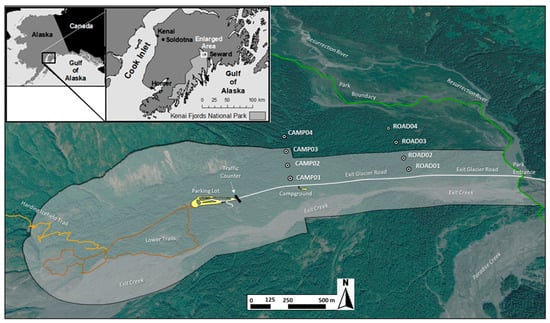
Figure 1

Figure 1
Open AccessArticle
Birds as Biodiversity Beacons: Identifying Conservation Priority Areas Through Multi-Dimensional Diversity in China
by
Fei Duan, Shuyi Zhu, Xiaoyun Shi, Xiaoli Shen and Sheng Li
Diversity 2025, 17(7), 442; https://doi.org/10.3390/d17070442 - 21 Jun 2025
Abstract
Biodiversity conservation plays a pivotal role in achieving sustainable development and fostering harmonious coexistence between humans and nature. This study identifies avian conservation priority areas across China by analyzing multi-dimensional biodiversity, incorporating species diversity, functional diversity, and phylogenetic diversity. Through systematic conservation planning
[...] Read more.
Biodiversity conservation plays a pivotal role in achieving sustainable development and fostering harmonious coexistence between humans and nature. This study identifies avian conservation priority areas across China by analyzing multi-dimensional biodiversity, incorporating species diversity, functional diversity, and phylogenetic diversity. Through systematic conservation planning using Zonation version 4 software, we delineated priority areas across these diversity dimensions. Our results demonstrate a distinct south-to-north diversity gradient in China’s avifauna, with functional and phylogenetic diversity hotspots concentrated in Yunnan Province, the Hengduan Mountains, Hainan Island, Taiwan Island, and southeastern coastal regions. The identified priority conservation areas cover 14.6% of China’s terrestrial territory, protecting 89.8% of the country’s bird species—including 93.5% of endemic species and 88.9% of critically endangered species. Notably, existing nature reserves encompass merely 8.1% of these priority areas, revealing substantial conservation gaps within the current protection framework. Building upon China’s 3C Zoning Framework (Cities and farms, Shared landscapes, and Large wild areas), we propose zone-specific conservation strategies, with particular emphasis on strengthening protected area networks in the eastern coastal regions and the middle-lower Yangtze River basin, where urbanization pressures are most acute. These findings highlight the critical importance of incorporating multi-dimensional diversity in conservation planning and offer novel perspectives for optimizing China’s protected area system.
Full article
(This article belongs to the Section Biodiversity Conservation)
Open AccessArticle
Study of the Geographical Distribution, Ecological–Biological Characteristics, and Economic Value of Rosa acicularis Lindl., Rosa laxa Retz., and Rosa spinosissima L. (Rosaceae) in Kazakhstan’s Part of the Altai Mountains
by
Alevtina N. Danilova, Tatyana A. Vdovina, Yuriy A. Kotukhov, Olga A. Anufriyeva, Andrey A. Vinokurov, Elena A. Isakova, Olga A. Lagus and Aidar A. Sumbembayev
Diversity 2025, 17(7), 441; https://doi.org/10.3390/d17070441 - 20 Jun 2025
Abstract
This article presents the results of a comprehensive study on Rosa acicularis Lindl., Rosa laxa Retz., and Rosa spinosissima L. growing in the sharply continental climate of the Kazakhstan Altai under diverse ecological and phytocenotic conditions. All three wild rose species show notable
[...] Read more.
This article presents the results of a comprehensive study on Rosa acicularis Lindl., Rosa laxa Retz., and Rosa spinosissima L. growing in the sharply continental climate of the Kazakhstan Altai under diverse ecological and phytocenotic conditions. All three wild rose species show notable ecological plasticity, allowing them to thrive in heterogeneous environments. A total of 41 populations were recorded: 12 of R. acicularis, 13 of R. laxa, and 16 of R. spinosissima, with vertical distribution ranging from 404 to 1837 m a.s.l. Nine populations where each species dominates its plant community were selected as model sites to assess ecological, biological, and economic traits. For each population, the floristic composition and structure were described, and morphometric, resource, and physiological indicators were evaluated. Significant phenotypic variation was noted in plant height, bush diameter, leaf traits, and fruit morphology and taste. Under natural conditions, industrial thickets are mainly formed by R. laxa in the Southern Altai and by R. spinosissima in the Southwestern Altai due to their wide distribution and high plant density. Fruit weight ranged from 2.23 to 2.47 g (R. acicularis), 2.28 to 2.68 g (R. laxa), and 2.17 to 2.55 g (R. spinosissima), values generally lower than those previously reported. Based on coefficients of variation for intra-population diversity in morphological and quantitative traits, several promising populations were identified. These populations hold potential for selecting valuable forms for breeding programs and for establishing a regionally adapted gene pool.
Full article
(This article belongs to the Special Issue Functional and Taxonomic Plant Diversity: Applications for Ecological Monitoring and Management)
►▼
Show Figures
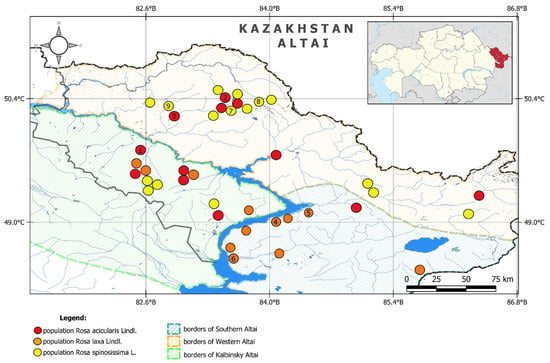
Figure 1

Figure 1
Open AccessArticle
Benthic Infauna in the Shallow-Water Hydrothermal System of Banderas Bay, Mexico: A Two-Period Comparison
by
María Carolina Rodríguez-Uribe, Rosa María Chávez-Dagostino, Patricia Salazar-Silva, Jani Jarquín-González, Alma Rosa Raymundo-Huizar and Fátima Maciel Carrillo-González
Diversity 2025, 17(7), 440; https://doi.org/10.3390/d17070440 - 20 Jun 2025
Abstract
At a depth of approximately 9 m off the coast of Banderas Bay, hydrothermal activity occurs through various seabed vents, discharging liquids and gases that reach temperatures of up to 89 °C and pH values lower than the surrounding seawater. This study examines
[...] Read more.
At a depth of approximately 9 m off the coast of Banderas Bay, hydrothermal activity occurs through various seabed vents, discharging liquids and gases that reach temperatures of up to 89 °C and pH values lower than the surrounding seawater. This study examines the composition of the benthic infauna inhabiting the sediments of this hydrothermal system in two time periods: November 2017 (previously reported) and September 2023 (recorded for this study). In total, for both samplings, we identified 17 benthic infaunal groups—amphipods, isopods, cumaceans, tanaidaceans, crabs, shrimps, copepods, snails, limpets, caecids, chitons, bivalves, scaphopods, polychaetes, amphioxus, ophiuroids, and bryozoans—belonging to these ten taxonomic classes: Malacostraca, Maxillopoda, Gastropoda, Polyplacophora, Bivalvia, Scaphopoda, Polychaeta, Leptocardii, Ophiuroidea, and Stenolaemata. Additionally, we identified galleries of polychaetes, vermetids, and peracarids. Despite the stressful hydrothermal conditions, statistical analyses of both sampling campaigns revealed no significant differences in abundance, highlighting the potential persistence and adaptability of benthic communities in hydrothermally influenced habitats.
Full article
(This article belongs to the Section Microbial Diversity and Culture Collections)
►▼
Show Figures
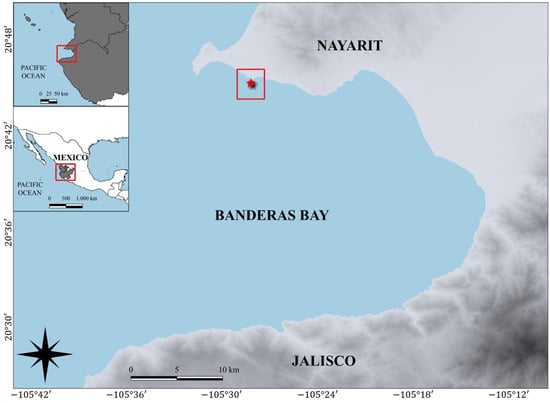
Figure 1

Figure 1
Open AccessArticle
Phylogeography of the Endangered Endemic Perkinsiodendron macgregorii Based on Chloroplast Genome Data
by
Ming-Hui Yan, Yan-Rong Du, Jia-Yi Zhao, Ke-Xin Xu, Lu Zhao, Jia-Meng Su and Lu-Miao Yan
Diversity 2025, 17(7), 439; https://doi.org/10.3390/d17070439 - 20 Jun 2025
Abstract
Perkinsiodendron macgregorii, an endangered Chinese endemic tree with high ornamental and ecological value, faces extinction threats due to its poor natural regeneration and habitat degradation. Despite the urgent need for its conservation, the genetic architecture and population differentiation mechanisms of this taxon
[...] Read more.
Perkinsiodendron macgregorii, an endangered Chinese endemic tree with high ornamental and ecological value, faces extinction threats due to its poor natural regeneration and habitat degradation. Despite the urgent need for its conservation, the genetic architecture and population differentiation mechanisms of this taxon remain poorly understood, hindering science-based protection strategies. We conducted comprehensive chloroplast genomic analyses of 134 individuals from 13 natural populations to inform science-based conservation. The chloroplast genome (158,538–158,641 bp) exhibited conserved quadripartite organization, with 113 functional genes and elevated GC contents in IR regions (42.99–43.02%). Population-level screening identified 741 SNPs and 678 indels, predominantly in non-coding regions (89.8%), with three distinct phylogeographic clades revealing north-to-south genetic stratification. The northern clade (Clade A) demonstrates the highest haplotype diversity and nucleotide diversity, followed by the southern clade (Clade C), while the central clade (Clade B) exhibits signals of genetic erosion (Tajima’s D > 3.43). Based on the genetic diversity distribution and phylogenetic tree of extant P. macgregorii, we inferred that the northern populations represent ancestral groups, while the Wuyi Mountains region and Nanling Mountains region served as glacial refugia. It is imperative to implement in situ conservation in these two regions. Additionally, ex situ conservation should involve collecting seed from representative populations across all three clades and establishing isolated cultivation lines for each clade. These findings establish a genomic framework for conserving endangered plants.
Full article
(This article belongs to the Section Biodiversity Conservation)
►▼
Show Figures
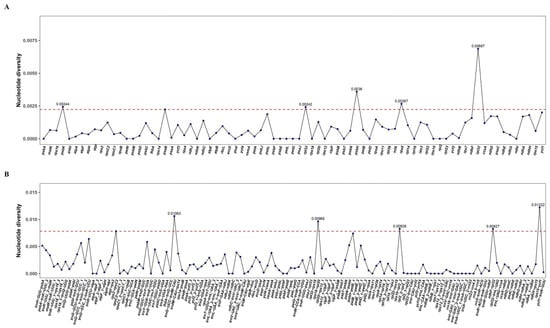
Figure 1

Figure 1
Open AccessArticle
Linking Riparian Forest to the Functional Diversity of Ephemeroptera, Plecoptera, and Trichoptera in First-Order Tropical Streams
by
Diego Simeone and Marcus E. B. Fernandes
Diversity 2025, 17(7), 438; https://doi.org/10.3390/d17070438 - 20 Jun 2025
Abstract
Riparian forests are important for maintaining aquatic biodiversity, yet they face increasing pressure from logging activities. This study assessed the functional diversity of Ephemeroptera, Plecoptera, and Trichoptera (EPT) in 30 Amazonian first-order streams across three riparian forests: pristine, selectively logged, and conventionally logged.
[...] Read more.
Riparian forests are important for maintaining aquatic biodiversity, yet they face increasing pressure from logging activities. This study assessed the functional diversity of Ephemeroptera, Plecoptera, and Trichoptera (EPT) in 30 Amazonian first-order streams across three riparian forests: pristine, selectively logged, and conventionally logged. We evaluated four habitat attributes linked to ecosystem functioning (canopy cover, water temperature, sediment organic matter, and small woody debris) and calculated two indices of functional diversity: richness and divergence. Functional diversity was highest in pristine streams, intermediate in selectively logged streams, and lowest in conventionally logged streams. Functional richness and divergence declined significantly in conventionally logged forests, indicating a loss of ecological traits and potential reductions in ecosystem functions. We also observed that canopy cover, sediment organic matter, and woody debris were positively associated with EPT functional diversity, while water temperature had a negative association. These findings highlight that conventional logging leads to the functional homogenization of aquatic insect assemblages, compromising key ecological processes. Selective logging that maintains riparian buffers may preserve functional diversity, even though these differences may be influenced by site-specific environmental conditions. Our results underscore the importance of conserving riparian integrity to sustain the resilience and functioning of tropical stream ecosystems in logged landscapes.
Full article
(This article belongs to the Special Issue Riparian–Aquatic Interactions: Linking Aquatic Insects Biodiversity and Riparian Forest Conservation)
►▼
Show Figures
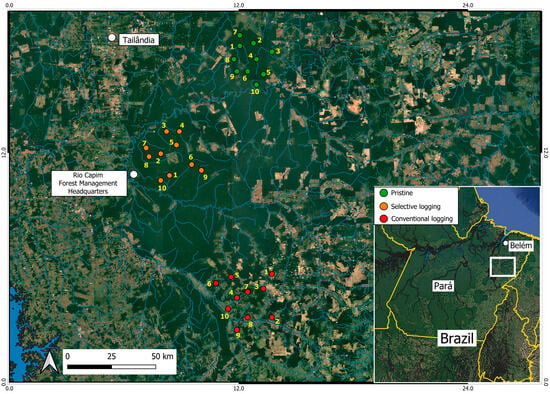
Figure 1
Open AccessArticle
Genetic Diversity of Selective Breeding Populations of Giant Freshwater Prawn (Macrobrachium rosenbergii) Based on SSR and Mitochondrial D-Loop Gene
by
Salifu Ibrahim, Amin Ruhul, Jingfen Li, Guoliang Yang, Shaokui Yi, Zhenglong Xia, Miaoying Cai, Yuewen Deng and Qiongying Tang
Diversity 2025, 17(7), 437; https://doi.org/10.3390/d17070437 - 20 Jun 2025
Abstract
►▼
Show Figures
Macrobrachium rosenbergii, commonly known as giant freshwater prawns (GFPs), is an economically and nutritionally important decapod crustacean species in China. Understanding the genetic diversity of selective breeding populations is crucial in breeding plans for selecting genetically diverse broodstocks and maintaining genetic diversity.
[...] Read more.
Macrobrachium rosenbergii, commonly known as giant freshwater prawns (GFPs), is an economically and nutritionally important decapod crustacean species in China. Understanding the genetic diversity of selective breeding populations is crucial in breeding plans for selecting genetically diverse broodstocks and maintaining genetic diversity. The genetic structure of six breeding populations (Hefu (HF), Nantaihu No.2 (NTH), Jiaxin (JX), Shufeng (SF), Taiwan (TW), and Guangxi (GX)) of GFP in China was examined using 16 newly developed microsatellite loci and the mitochondrial control region (D-loop). The microsatellite data revealed that all 16 loci have high diversity, with all values of polymorphism information content (PIC) more than 0.5. The average expected heterozygosity (He, 0.89) and the number of alleles (Na, 18.25) of SF were the highest, followed by He (0.89) and Na (14.75) of the JX, and GX has the lowest He (0.83) and Na (11.31). The average PIC value for the six stocks ranged from 0.80 to 0.87. Pairwise comparisons revealed that Fst ranged from 0.03541 to 0.09637 and was significant (p < 0.05) between most populations, indicating from low to moderate genetic differentiation among the six populations. The D-loop analysis identified 114 variable sites and 29 haplotypes, with an average haplotype diversity (Hd) and nucleotide diversity (π) of 0.640 and 0.01247, respectively. Genetic differentiation among the six populations based on the D-loop was from moderate to high, with Fst values of 0.05603–0.80788, and all p < 0.05. This study demonstrates that selective breeding stocks of M. rosenbergii in China show moderate to high genetic diversity and have the potential for further selective breeding, providing a theoretical basis for conserving and utilizing M. rosenbergii genetic resources.
Full article
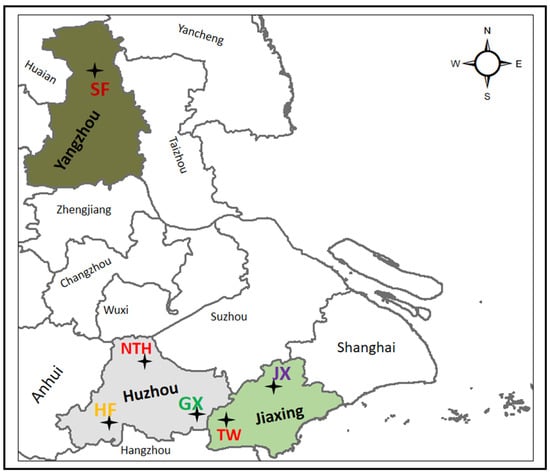
Figure 1
Open AccessArticle
Beyond Culture/Nature Divides: New Approaches and Tools for a Cultural Integrated Landscape Management
by
Luiz Oosterbeek
Diversity 2025, 17(6), 436; https://doi.org/10.3390/d17060436 - 19 Jun 2025
Abstract
In this article, we revisit the core concepts of nature and of landscape assessment and sustainability, based on which we propose an approach to natural resource management and diversity preservation from the perspective of cultural landscapes. We build on past and contemporary debates
[...] Read more.
In this article, we revisit the core concepts of nature and of landscape assessment and sustainability, based on which we propose an approach to natural resource management and diversity preservation from the perspective of cultural landscapes. We build on past and contemporary debates on the notion of nature and its relation to “Non-Nature”, attempting to systematize the main variables of the study of past societies as a methodological framework for the analysis of contemporary contexts; this is based on bibliographic references and case studies using such methodological approaches. Landscapes are structured through human activity, which relates to the technological and logistic drivers of historical studies, and are the domain of humans (anthropic nature), as opposed to non-anthropic nature (or wilderness). Sustainable resource management, focused on the preservation of biodiversity and cultural diversity as part of it, needs to overcome the divide between nature and culture, framing debates and conflicts as part of a cultural landscape of discussions served by an established methodological framework, in which education is the main driver and museum-related structures (libraries, etc.) form the flexible institutional backbone. The introduction sets the context for the argument, revisiting some of the theoretical approaches to the notions of nature and landscapes from the late 19th century in Europe, while also referring to reflections in antiquity and traditional and indigenous understandings. A section on materials and methods explains the methodological framework and data used by the author, situating it within a systematization of the humanities’ assessment of the past. A third section explores the interplay between materialities and perceptions, including the relevance of time- and space-driven approaches that shape different perceived landscapes; it proposes a definition of cultural landscape structured through these interplays. The fourth section discusses the dimension of perceived nature as a cultural landscape and characterizes its main drivers, offering two contemporary case studies as examples. A final section of conclusions discusses the role of humanities and of structures like museums, pointing to the new UNESCO program BRIDGES as a useful tool for pursuing landscape transformations.
Full article
(This article belongs to the Special Issue Landscape Science and Natural Resource Management)
►▼
Show Figures
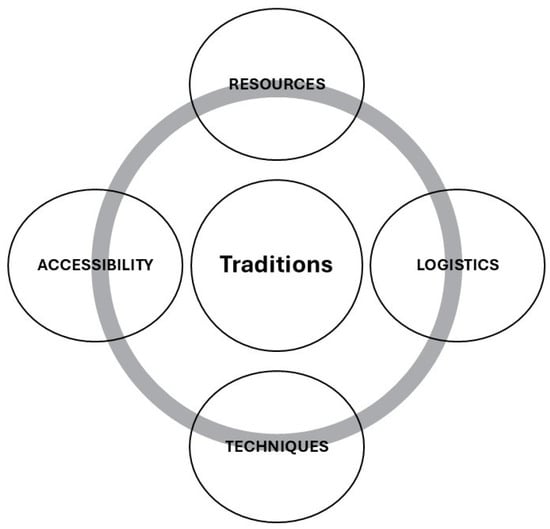
Figure 1
Open AccessArticle
Land Use Effects on the Space Use and Dispersal of an Apex Predator in an Ecotone Between Tropical Biodiversity Hotspots
by
Bernardo Brandão Niebuhr, Sandra M. C. Cavalcanti, Ermeson A. Vilalba, Vanessa V. Alberico, João Carlos Zecchini Gebin, Danilo da Costa Santos, Ananda de Barros Barban, Raphael de Oliveira, Eliezer Gurarie and Ronaldo G. Morato
Diversity 2025, 17(6), 435; https://doi.org/10.3390/d17060435 - 19 Jun 2025
Abstract
Assessing the ranging and dispersal behavior of apex predators and its consequences for landscape connectivity is of paramount importance for understanding population and ecosystem effects of anthropogenic land use change. Here, we synthesize ranging and dispersal ecological information on pumas (Puma concolor
[...] Read more.
Assessing the ranging and dispersal behavior of apex predators and its consequences for landscape connectivity is of paramount importance for understanding population and ecosystem effects of anthropogenic land use change. Here, we synthesize ranging and dispersal ecological information on pumas (Puma concolor) and present estimates of how different land uses affect the space use and dispersal of pumas on fragmented landscapes in an ecotone between biodiversity hotspots in southeastern Brazil. Additionally, we evaluate the effect of animal translocations on dispersal and movement patterns. Using location data for 14 GPS-collared pumas and land use data, we assessed when, how long, and how far individuals dispersed; how forest loss and infrastructure influenced puma home range size; and how movement patterns changed according to land use and proximity to infrastructure, during ranging and dispersal, for residents, natural dispersers, and translocated individuals. We present the first detailed record on the dispersal of pumas in Brazil and in the tropics, including long-distance dispersals, and show that pumas moved faster and more linearly during dispersal than during ranging. Their movement was slower and their home ranges were smaller in more forested areas, underscoring the importance of forest as habitat. In contrast, movement rates were higher in open pastures, mainly during dispersal. Our study underscores the scarcity of research on puma space use and dispersal in South America and reveals partial divergences in dispersal behaviors compared to North America and temperate regions, especially concerning dispersal ages. Furthermore, we give the first steps in presenting how land cover and human infrastructure affect the movement of this apex predator in a tropical ecosystem, an important subsidy for land use management. We call for more comprehensive studies on the movement ecology of carnivores combined with long-term population monitoring, to allow linking individual behavior with metapopulation dynamics and landscape connectivity and drawing more effective measures to sustain their populations.
Full article
(This article belongs to the Special Issue Landscape Biodiversity)
►▼
Show Figures
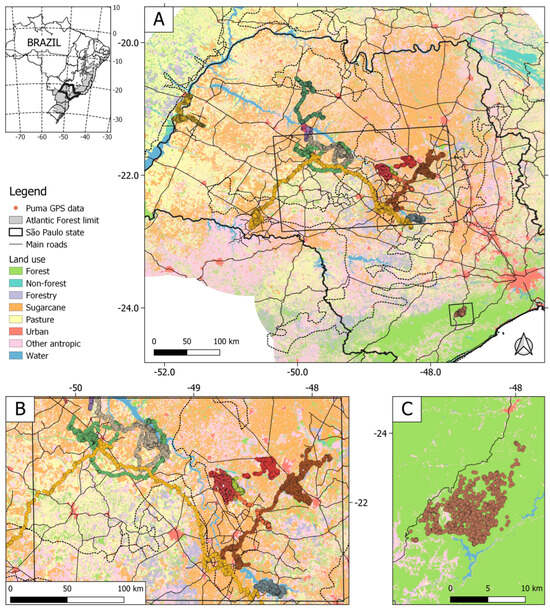
Figure 1
Open AccessReview
Coral Reef Restoration Techniques and Management Strategies in the Caribbean and Western Atlantic: A Quantitative Literature Review
by
Leah Hodges and Pamela Hallock
Diversity 2025, 17(6), 434; https://doi.org/10.3390/d17060434 - 19 Jun 2025
Abstract
A quantitative literature review of restoration techniques and supporting management strategies used throughout the Caribbean and Western Atlantic from 1998 through 2024 was compiled using references from the Web of Science to highlight those with potential for reef replenishment. From 93 sources listed,
[...] Read more.
A quantitative literature review of restoration techniques and supporting management strategies used throughout the Caribbean and Western Atlantic from 1998 through 2024 was compiled using references from the Web of Science to highlight those with potential for reef replenishment. From 93 sources listed, 74 publications were relevant and categorized into subtopics based on the most prevalent restoration techniques. Roughly half the studies focused on three general topics: the benefits of restoring Acropora species, studies utilizing micro-fragmentation and fragment nurseries, and outplanting techniques. Other subtopics, each with at least three references, included optimizing substrates and artificial reefs, enhancing larval recruitment, emphasizing the role of herbivory, improving management practices, and addressing the impacts of tourism and community engagement. The information from the references was compiled to determine the overlap among categories and the ways in which techniques and management strategies might be applied simultaneously to enhance restoration outcomes. Additionally, sources were analyzed according to time and location of publication to better visualize the emergence of this area of research and restoration efforts. An increase in publications was observed from 2014 to 2024, associated with the rise in major events impacting coral reefs. The major locations for published research were the Florida reef tract and Puerto Rico, though restoration studies were also reported from the Bahamas and sites around the Caribbean. Criteria to assess the success of techniques included coral survival, recruitment, coral coverage, habitat structure and complexity, and biomass of marine life, including fish and invertebrates that inhabited a restored reef. Most restoration efforts utilized either fragmentation or assisted sexual breeding, followed by cultivation in nurseries or labs. Outplanting success depended on fragment size, attachment style, and site selection, with less-intrusive techniques and intermediate planting densities promoting survival. Tools like GAO maps can guide site selection based on herbivore presence and algal coverage. Monitoring is critical to ensuring coral survival, especially after the first year of outplanting, while community involvement can foster public engagement in reef conservation.
Full article
(This article belongs to the Special Issue Ecology and Paleoecology of Atlantic and Caribbean Coral Reefs)
►▼
Show Figures
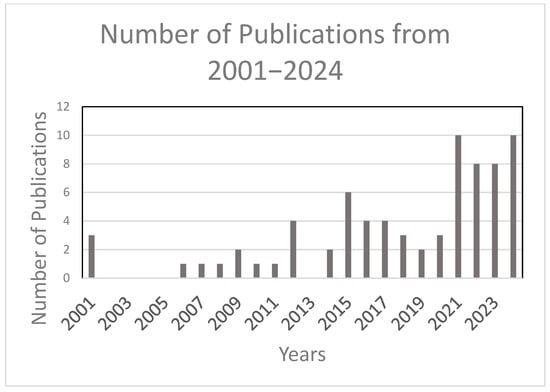
Figure 1
Open AccessInteresting Images
New Insular Record of the Giant Water Bug, Lethocerus patruelis (Hemiptera: Belostomatidae), from the Northeastern Aegean
by
Giorgos Stavrianakis, Asimina Koukoura, Apostolos Christopoulos and Yiannis G. Zevgolis
Diversity 2025, 17(6), 433; https://doi.org/10.3390/d17060433 - 19 Jun 2025
Abstract
Lethocerus patruelis (Stål, 1854) is a large aquatic hemipteran and the only European representative of the family Belostomatidae. Commonly known as the giant water bug, this species was historically restricted to the Balkans, Anatolia, and parts of the Middle East, but has exhibited
[...] Read more.
Lethocerus patruelis (Stål, 1854) is a large aquatic hemipteran and the only European representative of the family Belostomatidae. Commonly known as the giant water bug, this species was historically restricted to the Balkans, Anatolia, and parts of the Middle East, but has exhibited a marked westward and northward range expansion in recent decades. In this study, we report the first confirmed occurrence of L. patruelis on Lesvos Island, in the northeastern Aegean Sea, based on a direct observation made within a wastewater treatment facility. The individual was identified in situ using diagnostic morphological traits and photographed without disturbance. This finding extends the known insular distribution of the species and underscores its capacity to exploit anthropogenically modified aquatic systems. Given the island’s rich mosaic of natural and artificial wetland habitats—including over 200 mapped sites—Lesvos may offer suitable conditions for the establishment of local populations. This record highlights the need for targeted surveys and long-term monitoring across under-sampled insular landscapes.
Full article
(This article belongs to the Section Biodiversity Conservation)
►▼
Show Figures
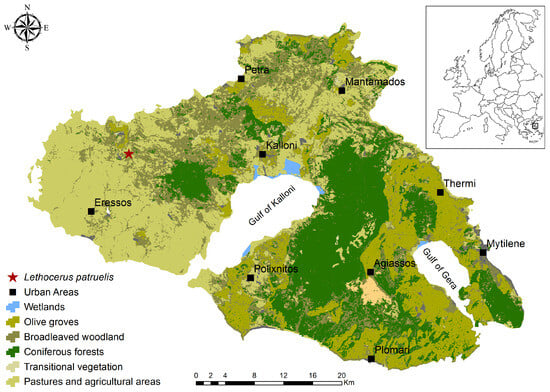
Figure 1
Open AccessArticle
Spatial Patterns and Functional Diversity of Nearshore and Offshore Coral-Reef Fish Communities in the South China Sea
by
Chen Zhang, Simin Hu, Lintao Huang, Xianzhi Lin, Hui Huang and Sheng Liu
Diversity 2025, 17(6), 432; https://doi.org/10.3390/d17060432 - 19 Jun 2025
Abstract
Coral-reef fishes in the South China Sea play a crucial role in sustaining ecosystem stability and delivering essential ecological functions. However, widespread coral degradation has led to habitat loss, intensifying environmental stress on reef-associated fish communities. To better understand their current status and
[...] Read more.
Coral-reef fishes in the South China Sea play a crucial role in sustaining ecosystem stability and delivering essential ecological functions. However, widespread coral degradation has led to habitat loss, intensifying environmental stress on reef-associated fish communities. To better understand their current status and guide conservation efforts, this study conducted a comprehensive, trait-based assessment of coral-reef fish diversity across 19 reef sites in the South China Sea, spanning nearshore (Sanya, Hainan) and offshore (Xisha and Nansha Islands) systems. Significant spatial differences were observed in species composition, functional trait structure, and responses to environmental disturbance. Offshore reefs, particularly in the Nansha Islands, exhibited the highest species richness, trophic complexity, and functional diversity, while nearshore reefs showed simplified community structure dominated by small, sedentary species with high microhabitat dependence. Coral cover was only weakly correlated with fish diversity and failed to reflect functional trait complexity, highlighting the limitation of relying on structural indicators alone. Using community-weighted trait metrics, PCA, and indicator species analysis, this study established a tri-principle framework for identifying priority conservation species based on ecological function, rarity, and vulnerability. Key functional species—including Chlorurus sordidus, Siganus fuscescens, and Cephalopholis urodeta—were identified, along with representative conservation sites such as Meiji Reef, Lingyang Reef, and Luhuitou. These findings underscore the need to integrate species-level and functional diversity into coral reef monitoring and management. The proposed framework provides a science-based foundation for prioritizing species and habitats, enhancing the resilience of reef ecosystems under the dual threats of climate change and anthropogenic pressure.
Full article
(This article belongs to the Special Issue Coral Reef Biodiversity Conservation and Ecological Rehabilitation)
►▼
Show Figures
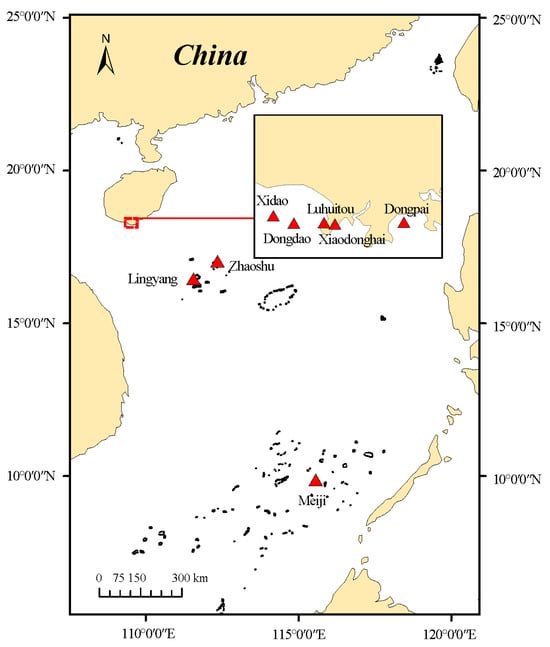
Figure 1
Open AccessArticle
Railway and Road Infrastructure in Saiga Antelope Range in Kazakhstan
by
Nazerke Bizhanova, Alexey Grachev, Nurkuisa Rametov, Yerlik Baidavletov, Saltore Saparbayev, Maxim Bespalov, Sergey Bespalov, Indira Kumayeva, Yerzhan Toishibekov, Anna Khamchukova and Yuri Grachev
Diversity 2025, 17(6), 431; https://doi.org/10.3390/d17060431 - 19 Jun 2025
Abstract
The saiga antelope (Saiga tatarica), a keystone migratory species of the Central Asian steppes and deserts, is increasingly threatened by habitat fragmentation due to the rapidly expanding transport infrastructure in Kazakhstan, which hosts approximately 95% of the species’ global population. This
[...] Read more.
The saiga antelope (Saiga tatarica), a keystone migratory species of the Central Asian steppes and deserts, is increasingly threatened by habitat fragmentation due to the rapidly expanding transport infrastructure in Kazakhstan, which hosts approximately 95% of the species’ global population. This study provides a spatial assessment of railway and road infrastructure across the contemporary ranges of the Betpaqdala, Ustyurt, and Ural saiga populations. Using the literature and our field data from the 1980s to the present day, combined with geographic information system (GIS)-based analysis of 80,427 km of roads and 4021 km of railways, we have quantified infrastructure densities and identified critical barriers to saiga migration using kernel density and minimum convex polygons (MCP) estimations. The results reveal a negative connection between infrastructure density and occurrences of saiga herds, particularly in the Ustyurt population, where a high railway density coincides with severely reduced migratory activity and a reduction in this population’s winter range by 79.84% since 2015. Major railways such as Sekseuildi–Zhezqazgan, Zhezqazgan–Zharyk, and Shalqar–Beineu intersect essential migratory pathways and have contributed to significant range contraction, subpopulation isolation, and northward shifts in seasonal habitats. In contrast, the Ural population (subject to minimal railway infrastructure interference) has shown robust demographic recovery. While roads are more widespread, their impact is less severe due to greater permeability. However, upcoming projects such as the China–Europe transit corridor and the “Center–West” regional development corridor could amplify future threats. We recommend immediately implementing wildlife-friendly infrastructure, including overpasses and ecological corridors, to preserve the connectivity of saiga ranges and support the long-term conservation of this ungulate species.
Full article
(This article belongs to the Section Biodiversity Conservation)
►▼
Show Figures
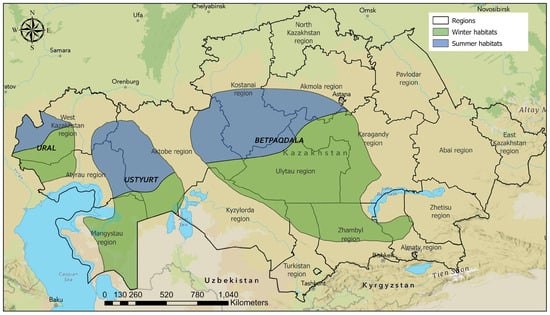
Figure 1
Open AccessArticle
Mt. Fuji in the Ocean–Description of a Strange New Species of Sea Anemone, Discoactis tritentaculata fam., gen., and sp. nov. (Cnidaria; Anthozoa; Actiniaria; Actinostoloidea) from Japan, with the Foundation of a New Family and Genus
by
Takato Izumi, Kensuke Yanagi and Hisanori Kohtsuka
Diversity 2025, 17(6), 430; https://doi.org/10.3390/d17060430 - 18 Jun 2025
Abstract
A new species in a new family and genus of sea anemone, Discoactis tritentaculata fam. gen. and sp. nov., was discovered at several localities around Japan. These anemones were indicated to belong to the superfamily Actinostoloidea by phylogenetic analyses. However, the specimens have
[...] Read more.
A new species in a new family and genus of sea anemone, Discoactis tritentaculata fam. gen. and sp. nov., was discovered at several localities around Japan. These anemones were indicated to belong to the superfamily Actinostoloidea by phylogenetic analyses. However, the specimens have flat, disc-like bodies; triplet tentacles on the oral disc; endocoels without tentacles; 10 macrocnemes in the column; and numerous microcnemes only in the aboral end. These features are unique among not only Actinostoloidea but also sea anemones in general, and thus they could not be accommodated into any existing families and genera in Actinostoloidea. Therefore, we establish the new family Discoactinidae and the new genus Discoactis for this species of anemone. Our phylogenetic analyses also suggested that the family Capneidae, of which the phylogenetic position has not been certainly convinced yet, also should be a member of Actinostoloidea, and thus we revised its placement and discussed the diagnosis of the superfamily. With these results, the superfamily Actinostoloidea now accommodates eight families.
Full article
(This article belongs to the Special Issue Taxonomy, Phylogeny and Biogeography of Cnidaria)
►▼
Show Figures

Graphical abstract

Journal Menu
► ▼ Journal Menu-
- Diversity Home
- Aims & Scope
- Editorial Board
- Reviewer Board
- Topical Advisory Panel
- Instructions for Authors
- Special Issues
- Topics
- Sections & Collections
- Article Processing Charge
- Indexing & Archiving
- Editor’s Choice Articles
- Most Cited & Viewed
- Journal Statistics
- Journal History
- Journal Awards
- Conferences
- Editorial Office
Journal Browser
► ▼ Journal BrowserHighly Accessed Articles
Latest Books
E-Mail Alert
News
Topics
Topic in
Agronomy, Diversity, Forests, IJPB, Plants
Plant Invasion
Topic Editors: Bruce Osborne, Panayiotis G. DimitrakopoulosDeadline: 31 July 2025
Topic in
Climate, Diversity, Forests, Plants, Sustainability, Earth
Responses of Trees and Forests to Climate Change
Topic Editors: Qinglai Dang, Ilona Mészáros, Lei WangDeadline: 30 August 2025
Topic in
Diversity, Forests, Genes, IJPB, Plants
Plant Chloroplast Genome and Evolution
Topic Editors: Chao Shi, Lassaâd Belbahri, Shuo WangDeadline: 31 August 2025
Topic in
Conservation, Diversity, JMSE, Remote Sensing, Technologies
Technological Innovation to Support Reef Research and Conservation
Topic Editors: Atsuko Fukunaga, John BurnsDeadline: 15 September 2025

Conferences
Special Issues
Special Issue in
Diversity
Morphology and Evolution of Snakes
Guest Editors: Jesse M. Meik, Paul M. HamptonDeadline: 30 June 2025
Special Issue in
Diversity
Climate Change: Vegetation Diversity Monitoring
Guest Editors: Ahmed Mukalazi Kalumba, Celso Augusto Guimarães Santos, Manoranjan MishraDeadline: 30 June 2025
Special Issue in
Diversity
Distribution, Biodiversity, and Ecology of Nematodes
Guest Editors: Elisa Baldrighi, Eleonora GrassiDeadline: 30 June 2025
Special Issue in
Diversity
The Applications of Emerging Technologies on Biodiversity ConservationGuest Editors: Xinhai Li, Guiming WangDeadline: 30 June 2025
Topical Collections
Topical Collection in
Diversity
Collection of Experts’ Researches on Aquatic Life (CEREAL)
Collection Editors: Wonchoel Lee, Bum Soo Park, Jae-Ho Jung





